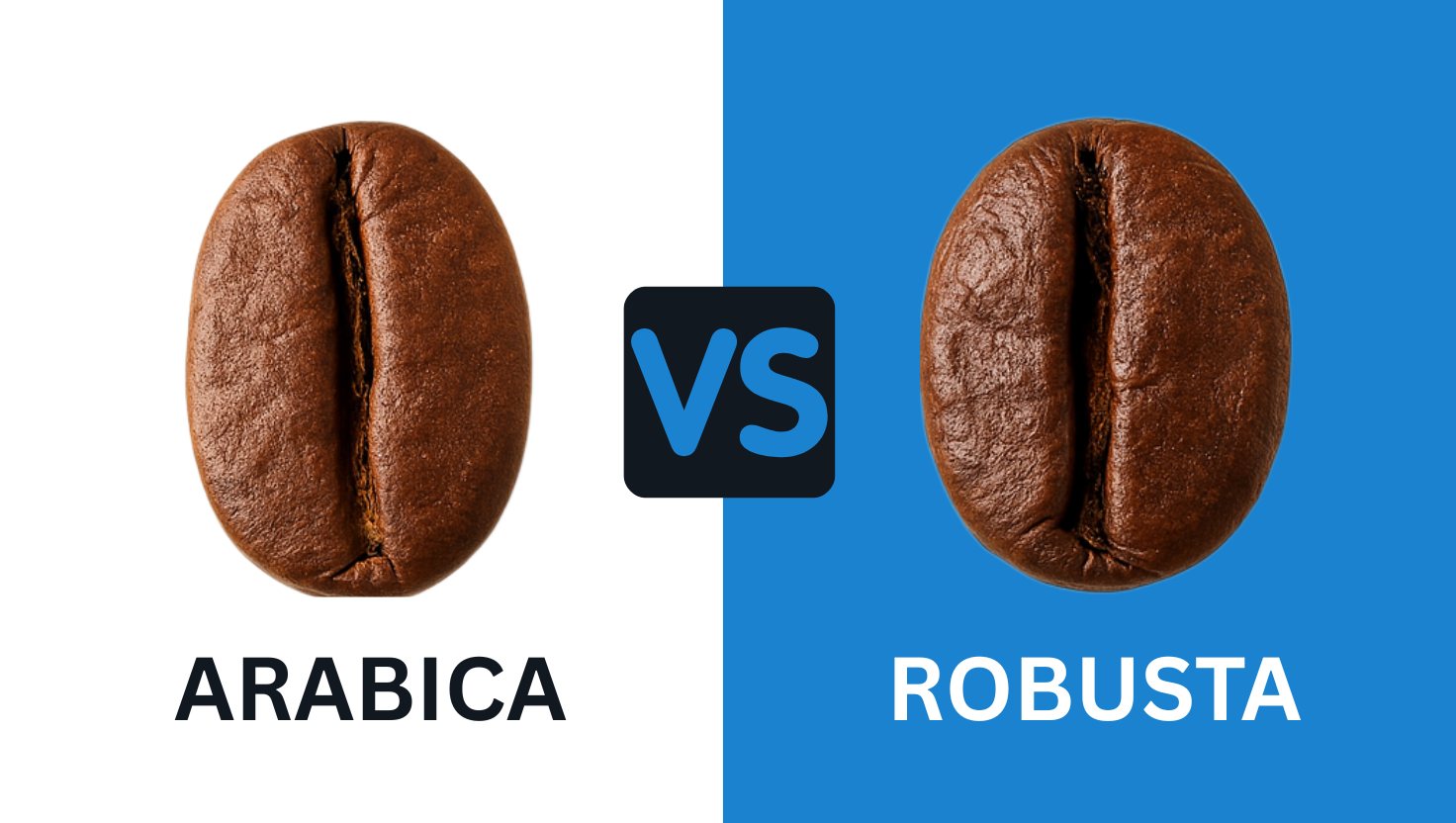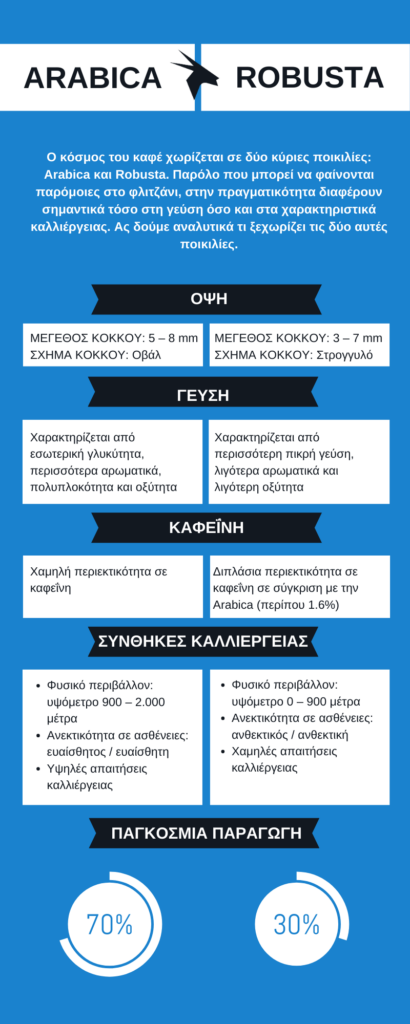Arabica vs Robusta: What Are the Key Differences?

Coffee is one of the most beloved beverages worldwide, but behind every cup lie different varieties with unique characteristics. The two dominant types in the coffee world are Arabica and Robusta. Although they come from the same plant family, they differ significantly in taste, caffeine content, growing conditions, and other key aspects. Let’s take a closer look at what makes each variety unique.
Appearance and Bean Size
Arabica beans are oval-shaped and typically range from 5 to 8 millimeters in size. On the other hand, Robusta beans are more round and slightly smaller, measuring about 3 to 7 millimeters.
Taste
Taste is perhaps the most noticeable difference between the two. Arabica offers a sweeter, more aromatic flavor profile, with complexity and acidity that make it popular among coffee enthusiasts. In contrast, Robusta has a stronger, more bitter taste, with fewer aromas and lower acidity — traits that make it a common choice for instant coffee or espresso blends that need intensity.
Caffeine Content
Arabica contains lower levels of caffeine, around 0.8% to 1.4%, while Robusta nearly doubles that amount, reaching 1.6% to 2.8%. This higher caffeine content contributes to Robusta’s more bitter flavor and greater resistance to pests and diseases.
Cultivation and Resilience
Arabica grows best at higher altitudes (900–2,000 meters) and is more sensitive to diseases and pests. Robusta, by contrast, thrives at lower altitudes (0–900 meters) and is much more resilient, making it easier and cheaper to cultivate.
Global Production
Globally, Arabica accounts for about 70% of total coffee production, while Robusta makes up the remaining 30%.
Regions of Cultivation
Ethiopia is considered the birthplace of Arabica, while Robusta is primarily cultivated in countries like Congo and other lowland regions.
Arabica and Robusta are two different worlds in the same cup of coffee. One is smoother and more aromatic; the other is bolder and more intense. There’s no right or wrong — it all comes down to what you personally enjoy. Now that you know the key differences, you can choose the one that suits your taste and enjoy your coffee even more.
